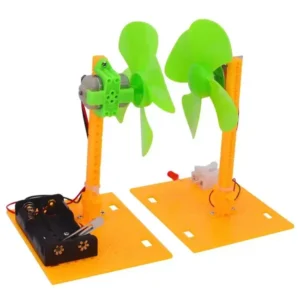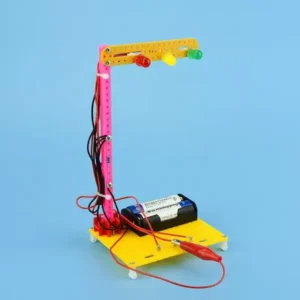Product Details
Reviews
Product Details
Objective:
Demonstrate a model of the solar system to illustrate the relative sizes, distances, and orbital patterns of celestial bodies.
Materials included:
Styrofoam or foam balls (for celestial bodies)
Wooden dowels or wires (for support)
Paints and brushes
A base (for mounting the model)
Materials not included in the kit:
Procedure and assembly steps:
Procedure included in the kit manual . This is not a ready made product. Student needs to follow the steps to assemble the model…
Description:
The Solar System Model:
The solar system is a vast space filled with many celestial objects, but its central figure is the Sun. The Sun is a giant ball of hot, glowing gas that provides heat and light to all the planets and objects in the solar system. Around the Sun, there are several types of celestial bodies, including:
- Planets: There are eight planets in our solar system, including Mercury, Venus, Earth, Mars, Jupiter, Saturn, Uranus, and Neptune. These planets orbit the Sun in elliptical paths.
- Dwarf Planets: Pluto used to be considered the ninth planet, but it’s now classified as a dwarf planet. Other dwarf planets, like Eris and Haumea, are also part of the solar system.
- Moons: Many of the planets have moons that orbit them. For example, Earth has one moon, while Jupiter has over 70!
- Asteroids and Comets: These are small, rocky or icy objects that orbit the Sun. They can be found in various parts of the solar system, such as the asteroid belt between Mars and Jupiter.
Learning outcome:
Have a better understanding of the solar system to illustrate the relative sizes, distances, and orbital patterns of celestial bodies using the model built by the student in this project
Section or subject:
Physics
Grades:
3+
Reviews
Be the first to review “Solar System Model” Cancel reply
















Reviews
There are no reviews yet.